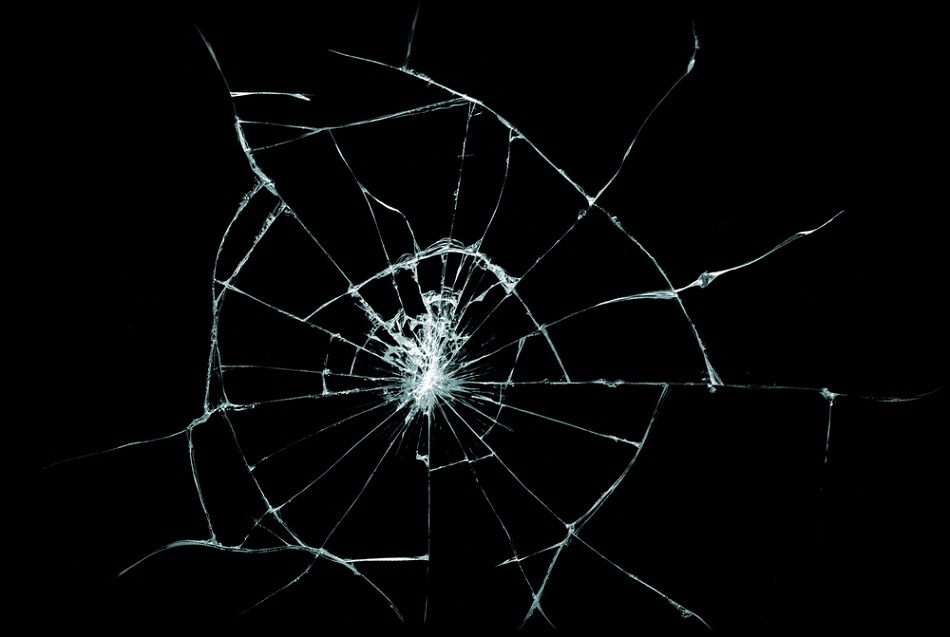 Archiwiz/ Shutterstock.com
Archiwiz/ Shutterstock.com
Cracks behave in a strange manner when they spread rapidly in brittle materials and the way a crack proliferates has long been an issue in Material Science, Construction and Product Development.
Scientists have recently discovered a mechanism which causes this odd behavior and hope their study will allow others to better understand how fragile materials such as glass, ceramic and bone break, and how to better design materials to avoid failure.
The classical theory of cracks – which is based on linear elasticity and an extraneous local symmetry criterion to predict crack paths – doesn’t explain how they actually work as it ignores dynamic oscillatory instability which Researchers studying cracks have recently observed.
Researchers from the Department of Physics at Northeastern University in America - together with colleagues from the Weizmann Institute of Science's Chemical Physics Department in Israel - have developed a novel theory to help predict, through large scale computer simulations, the dynamics of a crack under varying conditions.
Their goal was to understand how things break and how the mechanical properties of the region of high stress concentration around the edge of the crack affects the crack dynamic.
The work – published in Nature Physics – has the potential to help Researchers understand why and how certain materials fail.
While straight cracks can, in principle, race through a material as fast as the speed of sound, they never reach that speed for reasons that have remained elusive. We have shown that this is because cracks become inherently unstable when their speed is sufficiently high. Instability causes the crack tip to wobble from side to side and trace out a wavy path through the material.
This instability has been completely missed by conventional theories of fracture, which all assume that the relationship between stretch and force inside a material is linear, meaning that doubling the force doubles the amount of stretch. Our work shows that this assumption breaks down near the crack tip and explains how the nonlinear relationship between stretch and force produces oscillations with a well-defined period that can be related to materials properties.
Alain Karma, Distinguished Professor, Department of Physics Arts and Sciences, Northeastern University
Karma and his colleagues developed a two-dimensional theory for predicting arbitrary paths of ultrahigh-speed cracks, which incorporates elastic nonlinearity without extraneous criteria.
In their paper they demonstrated, “that cracks undergo an oscillatory instability controlled by small-scale, near crack-tip, elastic nonlinearity. This instability occurs above an ultrahigh critical velocity and features an intrinsic wavelength proportional to the ratio of the fracture energy to the elastic modulus, in quantitative agreement with experiments. This ratio emerges as a fundamental scaling length assumed to play no role in the classical theory of cracks, but shown here to strongly influence crack dynamics.”
Karma hopes to continue this work, elucidating the mechanism by investigating the three-dimensional phenomenon of micro-branching, when the main crack splits into many micro-cracks, to understand its origins in bulk samples of brittle materials.
"This study used very thin sheets of quasi-2D materials. We plan to extend this study to 3D bulk materials. In bulk, the instability that prevents cracks from breaking at the speed of sound happens at a lower crack velocity than in 2D but the mechanism is not understood," Karma says. He then added, "We believe that the non-linear relationship between force and deformation is at the root of micro-branching instabilities, and we think we can crack that problem."
Disclaimer: The views expressed here are those of the author expressed in their private capacity and do not necessarily represent the views of AZoM.com Limited T/A AZoNetwork the owner and operator of this website. This disclaimer forms part of the Terms and conditions of use of this website.